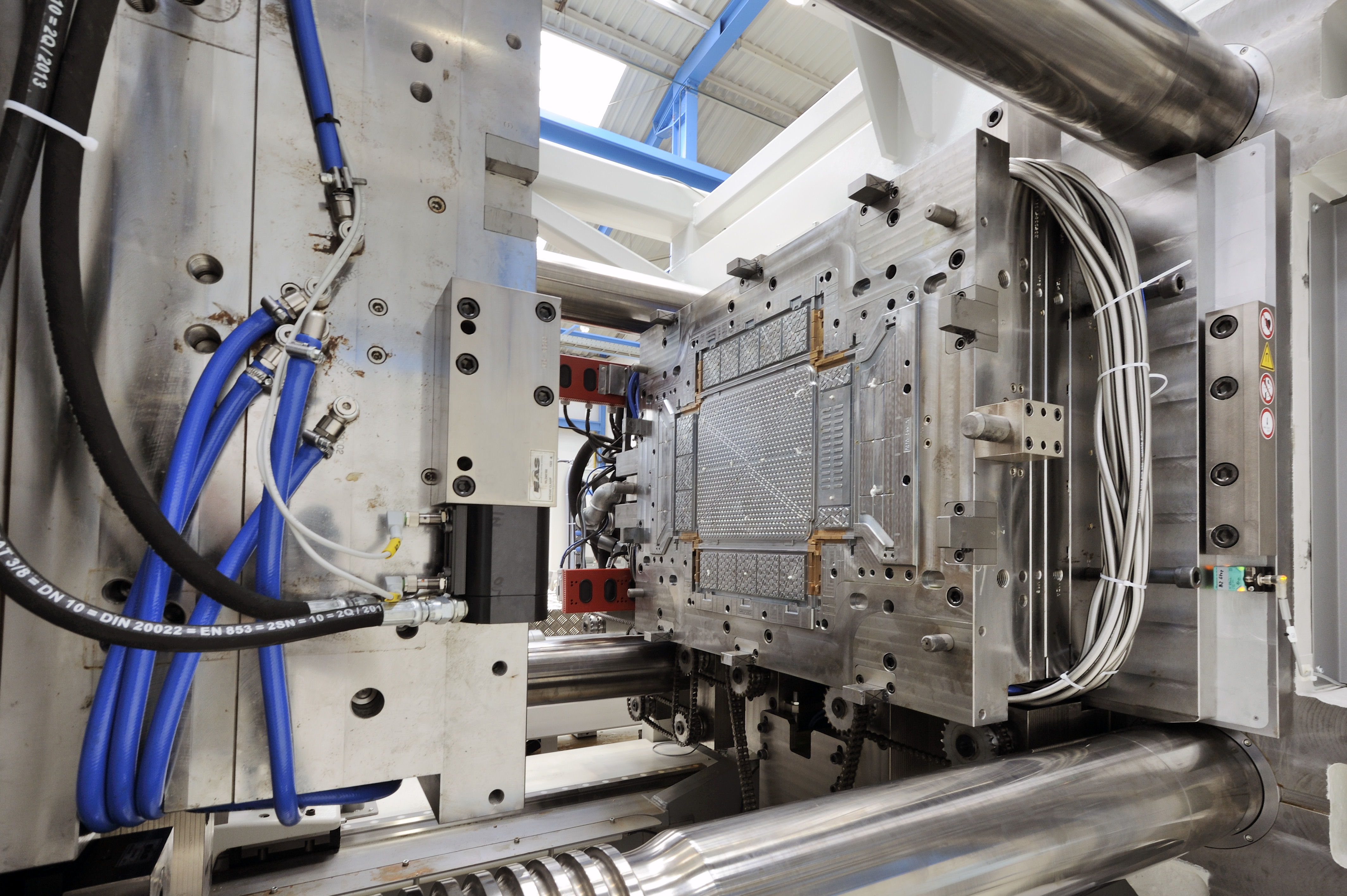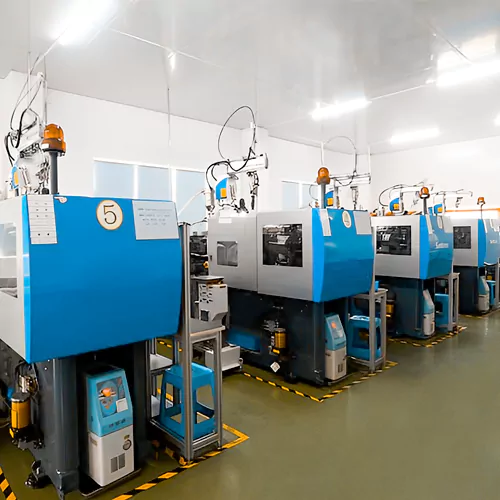Comprehending the Plastic Injection Molding Process for High-Quality Manufacturing
Comprehending the Plastic Injection Molding Process for High-Quality Manufacturing
Blog Article
Understanding the Basics of Plastic Injection Molding Processes
Plastic injection molding functions as a cornerstone of modern production, supplying a systematic approach to producing complex components with precision. This process not only encompasses the basic steps of melting and infusing materials into molds yet also entails a nuanced understanding of numerous influencing variables, such as temperature level and stress. As industries significantly demand efficiency and high quality, the intricacies of this method come to be more important. Checking out these essential elements could reveal how even minor adjustments can result in significant improvements in production outcomes, questioning about the possibility for technology in this well-known procedure.
What Is Plastic Shot Molding?
Plastic injection molding is a commonly utilized production procedure that changes thermosetting and polycarbonate materials right into exact and complex forms. This strategy is favored for its capability to create high volumes of similar get rid of remarkable precision, making it an important method in different sectors, consisting of automobile, durable goods, and medical gadgets.
The procedure entails melting the selected plastic product and infusing it right into a mold under high pressure. The mold and mildew, made to the specifications of the preferred component, permits the liquified plastic to materialize as it cools and strengthens. As soon as the material has hardened, the mold is opened, and the completed part is expelled.
Plastic shot molding offers several advantages, consisting of lowered waste, uniformity in manufacturing, and the capability to incorporate elaborate designs that might be testing with other producing approaches. Additionally, it sustains a wide variety of products, each providing unique buildings that can be customized for details applications. As industries proceed to introduce, plastic shot molding continues to be at the center, making it possible for the growth of innovative items that satisfy developing consumer demands.
The Shot Molding Refine
The injection molding process is a sophisticated technique that entails numerous key stages to produce high-quality plastic components. Plastic pellets are fed right into a heated barrel where they are melted right into a viscous liquid. This molten plastic is after that infused under high pressure right into a precision-engineered mold and mildew, which shapes the material right into the preferred form.
As soon as the mold is filled, the plastic is permitted to strengthen and cool, taking the form of the mold dental caries. Air conditioning time is crucial, as it impacts the cycle time and the final residential properties of the molded part. After adequate air conditioning, the mold opens up, and the completed component is ejected using ejector pins.

Materials Used in Injection Molding
Various products can be utilized in the injection molding procedure, each offering unique residential or commercial properties that accommodate particular applications. One of the most typically utilized materials include thermoplastics, thermosetting plastics, and elastomers.

Thermosetting plastics, like epoxy and phenolic materials, undertake a chemical modification throughout the healing process, leading to an inflexible, inflexible structure. find more information These materials are excellent for applications requiring high warm resistance and architectural honesty, typically made use of in electric insulators and automotive parts.
Elastomers, consisting of silicone and rubber-based materials, offer versatility and strength. Their one-of-a-kind residential or commercial properties make them appropriate for applications that require flexibility, such as seals and gaskets.
Additionally, specialty materials like bio-based plastics and composites are getting grip for their ecological advantages and boosted efficiency features, broadening the extent of shot molding applications in different markets. Recognizing the residential or commercial properties of these products is essential for selecting the suitable type for particular jobs.
Advantages of Injection Molding
Injection molding stands out as a highly reliable production procedure that uses many advantages for producing complex get rid of accuracy. Among the most significant advantages is the capacity to produce elaborate designs that would certainly be tough or difficult to attain with various other techniques (Plastic Injection Molding). The process permits limited tolerances and detailed attributes, making certain high-grade parts
Furthermore, injection molding is recognized for its fast production capacities, making it a suitable option for high-volume production. When the mold is developed, parts can be generated swiftly, decreasing preparations and enhancing overall efficiency. This efficiency not just lowers production costs however additionally provides an one-upmanship on the market.
The versatility of products made use of in injection molding better improves its allure. A broad array of thermoplastics and thermosetting polymers can be utilized, permitting manufacturers to choose products that finest fulfill their certain demands, consisting of versatility, toughness, and heat resistance.
Moreover, the process lessens waste, as excess product can frequently find out be reused and recycled. This sustainability element adds to a lowered environmental effect, making shot molding a liable production selection. Overall, the advantages of injection molding make it a favored approach for several industries.
Factors Affecting Product High Quality
While many variables can affect item top quality in shot molding, recognizing these components is important for achieving optimum results. Secret facets consist of product option, refining criteria, and mold and mildew layout.
Product choice plays an essential duty, as various polymers display special properties that affect flowability, strength, and thermal security. Poor product option can result in defects such as warping or insufficient dental filling.
Processing parameters, including temperature level, stress, and cycle time, should be carefully controlled. Variants in these setups can cause disparities partly measurements and surface area finish. As an example, exceedingly high temperatures might trigger degradation of the polymer, while poor stress can result in brief shots.
Mold style is just as important, as it determines the flow of the molten plastic and the cooling process. Badly developed mold and mildews may lead to unequal cooling prices, resulting in dimensional mistakes and recurring tensions.

Conclusion
Finally, plastic shot molding offers as an essential production procedure that enables the effective production of top quality components. Mastery of the shot molding procedure, including the understanding of materials and the impact of numerous aspects on product quality, is important for achieving optimum outcomes. The benefits of this technique, such as cost-effectiveness and design flexibility, more highlight its importance across numerous sectors, strengthening its condition as a preferred choice for high-volume manufacturing.
Plastic shot molding offers as a foundation of modern-day production, providing a systematic technique to producing complex components with accuracy.Plastic shot molding supplies several benefits, including lowered waste, consistency in manufacturing, and the capability to integrate complex layouts that may be challenging with various other producing methods (Plastic Injection Molding). As sectors proceed to innovate, plastic shot molding stays at the leading edge, making it possible for the growth of sophisticated products that satisfy developing consumer demands
The shot molding procedure is a sophisticated method that involves several vital stages to create premium plastic elements.In verdict, plastic shot molding offers as an essential production process that enables the effective production of high-quality elements.
Report this page